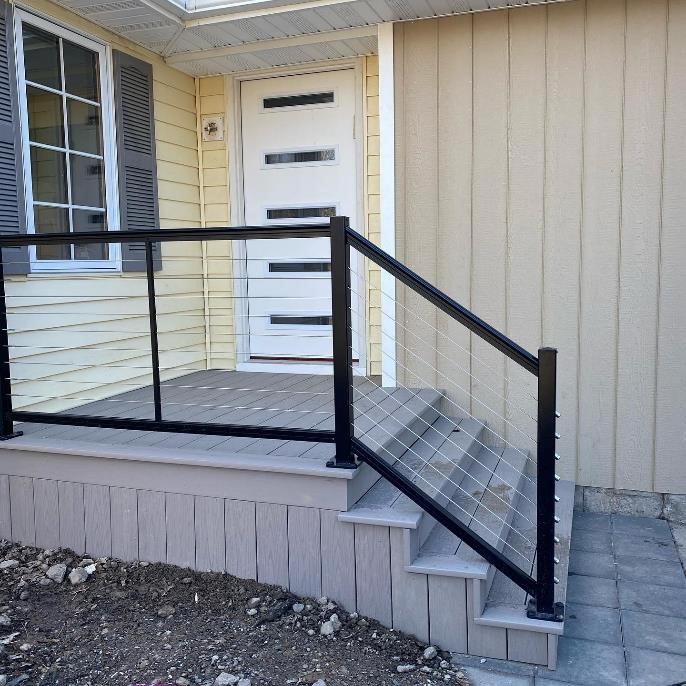Home Remodel Blog
Deck Builders Near Me: 6 Top Deck Building Tips
Deck Builders Near Me: 6 Top Deck Building Tips
Are you contemplating, “Where can I find skilled deck builders near me?” Before you start envisioning cozy evenings with friends and family on your new deck, it’s crucial to recognize that a well-crafted deck requires careful consideration and planning. From the materials used to the design layout, each aspect plays a significant role in creating a space that not only enhances your home’s aesthetic appeal but also provides functionality and longevity. Here are six top deck building tips that will empower you to discuss your project with your contractor. By the end of this article, you’ll be equipped to articulate your preferences and make informed decisions throughout the building process.1. Define Your Purpose:
Start by envisioning the activities and functions you envision enjoying on your deck, whether it’s hosting outdoor gatherings, relaxing with a book, or simply soaking up the sunshine. By clearly articulating your intended use, you’ll provide valuable insight for the deck builders near you, guiding them in creating a design that aligns with your lifestyle and vision. For example, if you’re an avid entertainer who loves hosting summer barbecues and outdoor parties, you’ll likely want a spacious deck layout with designated seating areas and perhaps even features like built-in benches or an outdoor kitchen. If you’re considering a deck primarily as a play area for your kids, Discuss with the deck builders the importance of features like sturdy railings, secure staircases, and rounded edges to minimize the risk of accidents. Consider incorporating childproof gates or barriers to prevent access to potentially hazardous areas.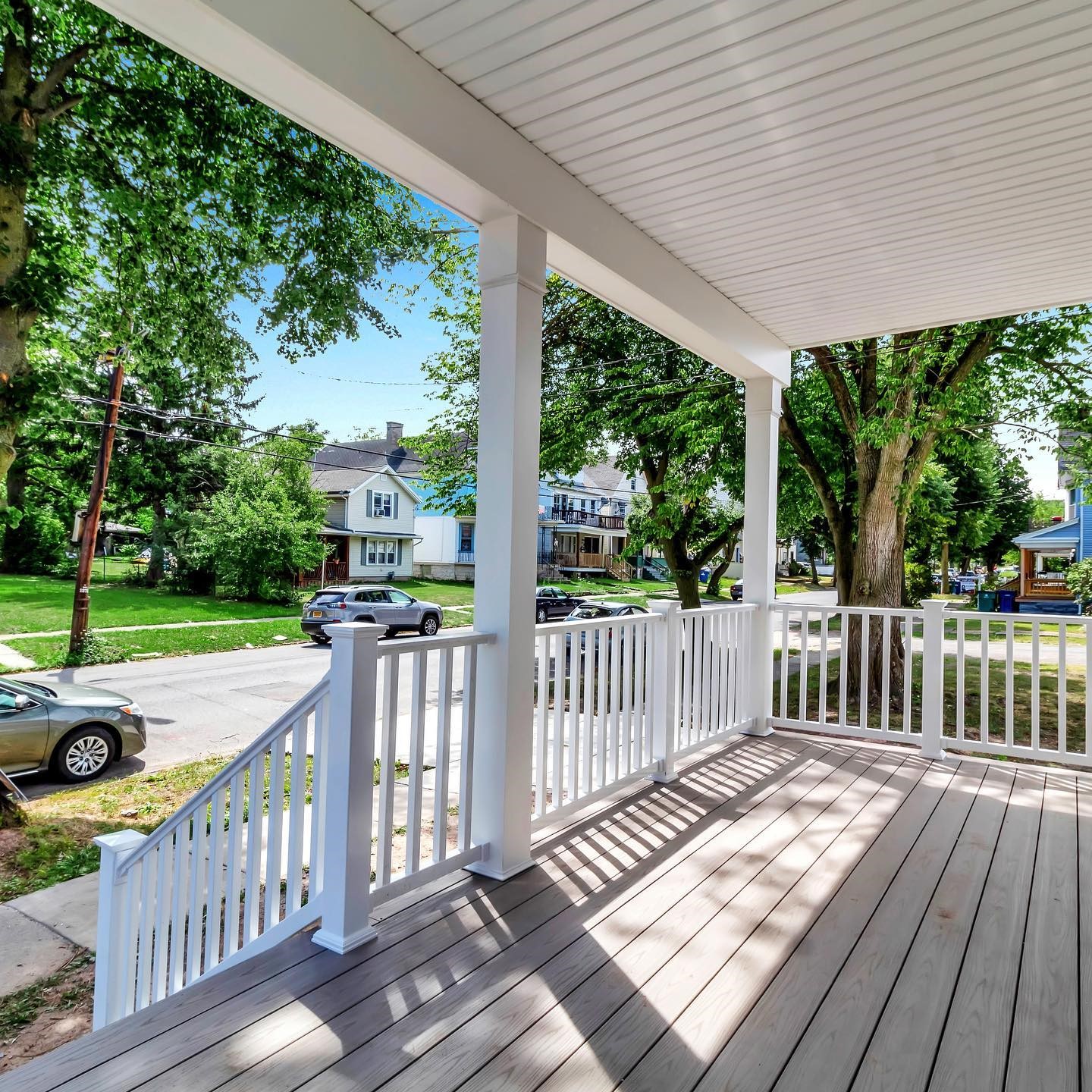
2. Choose the Right Material:
Selecting the appropriate decking material is crucial for both aesthetics and durability. Options range from traditional wood to composite or PVC decking, each offering unique advantages in terms of appearance, maintenance requirements, and longevity. Consider factors such as climate, maintenance preferences, and budget when making your decision. Here’s an overview of some common decking materials, along with considerations for why you might choose one over another:-
-
Pressure-Treated Wood:
Pressure-treated wood is a popular and budget-friendly option for deck construction. Treated with chemicals to resist rot, insects, and decay, it offers durability and affordability. However, it requires regular maintenance, including staining or sealing every few years to protect against moisture and UV damage. -
Composite Decking:
Composite decking is a synthetic material made from a blend of wood fibers and recycled plastic. It offers the look of wood without the maintenance, as it resists fading, staining, and mold growth. Composite decking is highly durable, with excellent resistance to moisture, rot, and insects. While it tends to be more expensive upfront, it can be more cost-effective in the long run due to its low maintenance requirements. -
PVC Decking:
PVC decking is made from 100% plastic, offering exceptional durability and resistance to moisture, mold, and insects. It requires minimal maintenance, as it does not need staining or sealing like wood. PVC decking is available in a variety of colors and finishes, providing versatility in design options. However, it tends to be more expensive than other materials and may have a less natural appearance. -
Vinyl Decking:
Vinyl decking requires minimal maintenance and is easy on the budget. It is highly durable and resistant to rot, decay, insects, and UV damage. Vinyl decking systems often feature interlocking panels or tongue-and-groove designs that facilitate quick and easy installation. -
Hardwood Decking:
Hardwood decking, such as tropical hardwoods like ipe or mahogany, offers unmatched durability and natural beauty. These dense, exotic woods are highly resistant to rot, insects, and decay, making them ideal for outdoor use. However, it is typically one of the most expensive decking options.
-
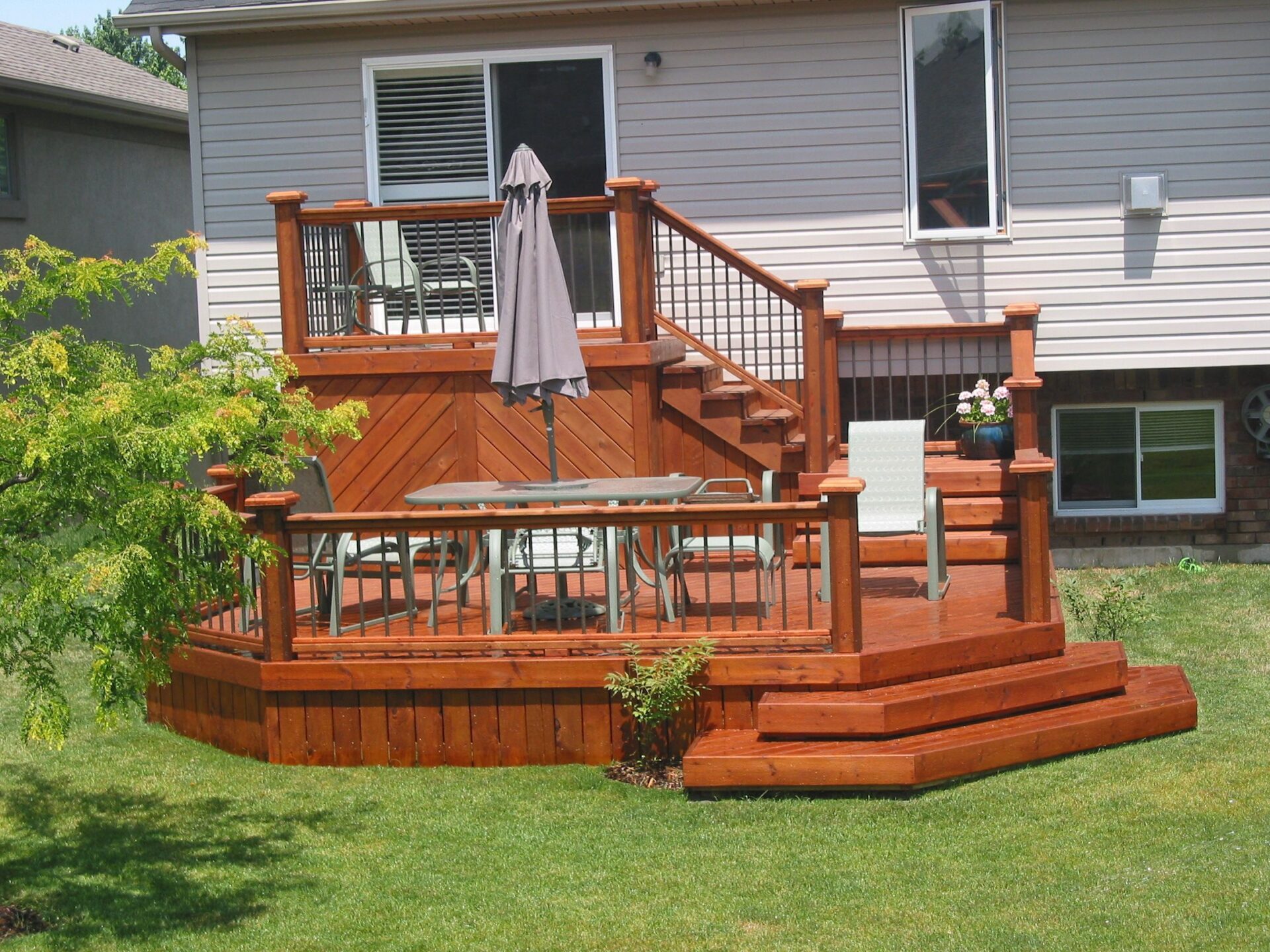 Image Credit: creativehomescapes.com
Image Credit: creativehomescapes.com 3. Prioritize Safety:
Safety should always be a top priority when designing and building a deck. Your job is not to understand building regulations. But you should do a good job vetting your potential deck builders to ensure they are reputable, will stick to local building codes and regulations, and can be trusted to build with structural integrity.-
-
Proper Design and Construction:
Work with experienced and qualified deck builders near you to design and build your deck. Ensure that the design accounts for factors such as soil conditions, drainage, and site-specific considerations to prevent issues like settling, water pooling, or structural failure. -
Choose Quality Materials:
Select high-quality materials that are durable, weather-resistant, and suitable for outdoor use. Opt for decking materials, fasteners, and hardware that are specifically designed for outdoor applications and capable of withstanding exposure to the elements over time. -
Sturdy Railings and Guards:
Install sturdy railings and guards along the perimeter of the deck and any elevated areas to prevent falls and provide a barrier to protect occupants. -
Slip-Resistant Surfaces:
Choose decking materials with slip-resistant surfaces or apply non-slip coatings or treatments to reduce the risk of slips and falls, particularly in wet or high-traffic areas. Consider features such as grooved or textured decking to improve traction. -
Sun Protection:
Consider incorporating features like pergolas, umbrellas, or awnings to provide relief from the sun’s rays while still allowing for outdoor fun. -
Install Proper Lighting:
Incorporate adequate lighting into your deck design to improve visibility and safety, especially during evening hours. Install overhead lighting, stair lighting, and pathway lighting to illuminate key areas and prevent accidents due to poor visibility.
-
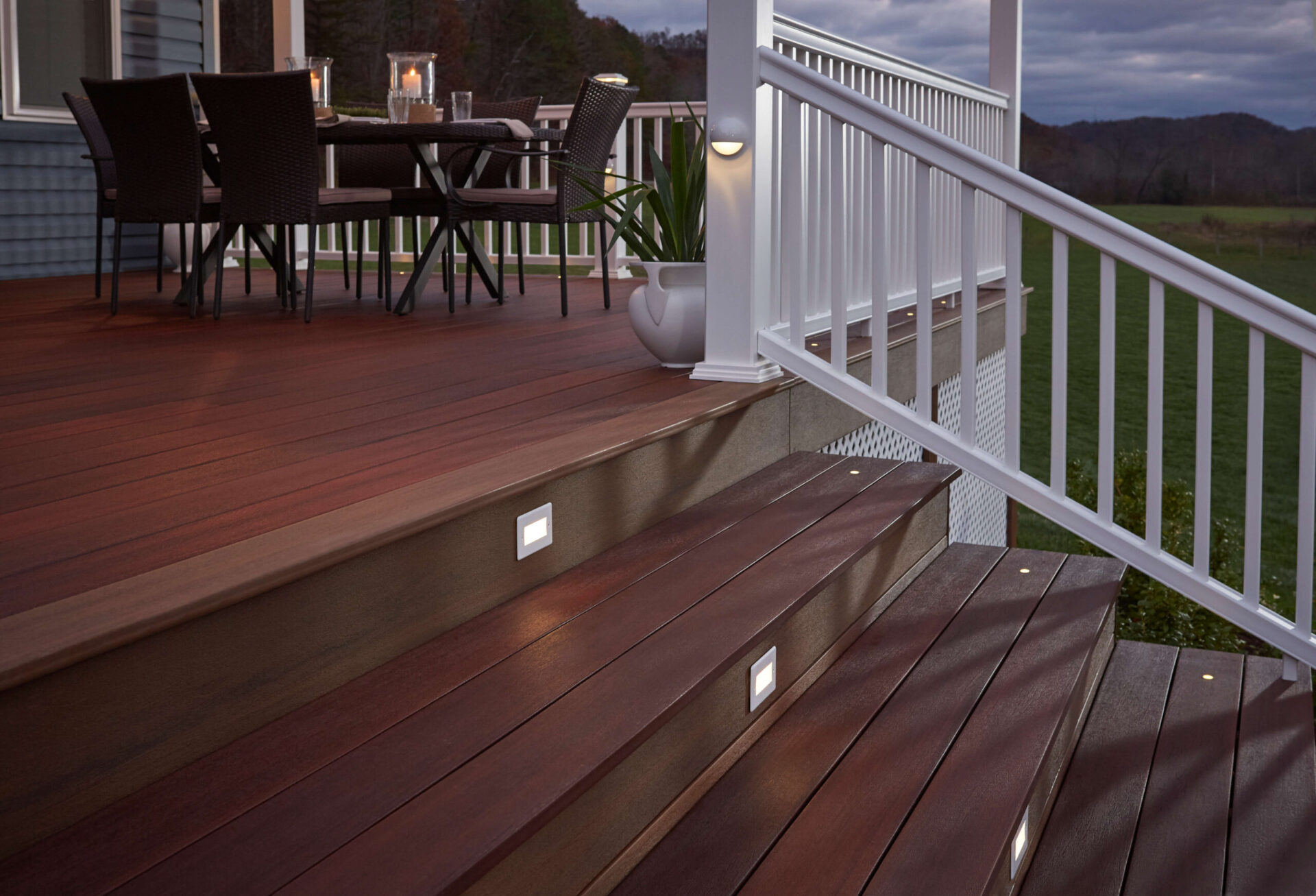 Image Credit: C&L Ward (goclward.com)
Image Credit: C&L Ward (goclward.com) 4. Consider Deck Layout and Size:
It is important to choose the right size for your deck that maximizes usability, enhances your outdoor living experience, and complements your home’s aesthetic. Here are some considerations to help you determine the appropriate size for your deck:-
-
Evaluate Available Space:
Start by assessing the available space in your yard where you plan to build the deck. Consider factors such as the layout of your property, existing landscaping features, and any architectural elements that may impact the deck’s placement and size. -
Define Functional Zones:
Think about how you intend to use the deck and what activities you want to accommodate. For example, you may want separate zones for dining, lounging, cooking, or entertaining. Define these functional areas to help determine the layout and size requirements for each zone. -
Consider Traffic Flow:
Ensure that the deck layout allows for smooth traffic flow and easy access to different areas of your outdoor space. Plan for sufficient pathways and clearances between furniture or features to prevent congestion and enhance usability. -
Factor in Furniture and Accessories:
Take into account the size and placement of outdoor furniture, grills, planters, and other accessories you plan to incorporate into your deck design. Allow ample space for comfortable seating arrangements, dining tables, and any additional features you desire. -
Think About Future Needs:
Anticipate how your needs may change over time. Leave room for potential future additions or upgrades, such as a hot tub, outdoor kitchen, or additional seating areas. -
Consider the Price:
Decking materials are typically priced and sold by the square foot. For example, if you’re purchasing composite decking, you’ll typically pay a per-square-foot price based on the total area of decking you need to cover. The cost may also include additional materials such as railing, framing, and hardware. -
Anticipate Future Goals
Whether it’s leaving space for future expansions, planning for the installation of outdoor kitchens or hot tubs, or making room in the yard for an outdoor pool or garden, think ahead.
-
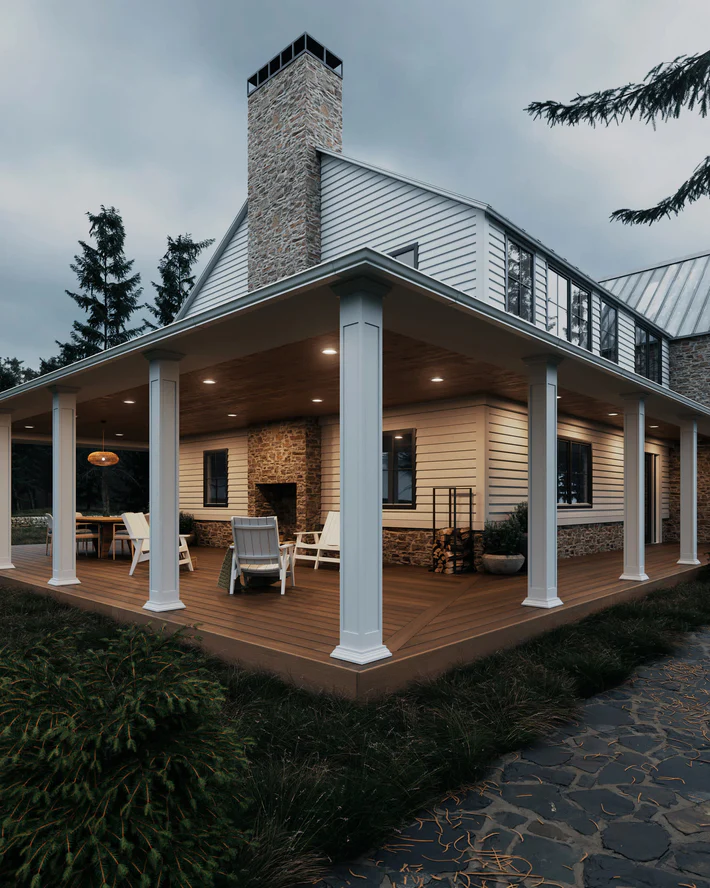 Image Credit: fiberondecking.com
Image Credit: fiberondecking.com 5. Determine Your Budget:
Here’s a step-by-step guide to help you establish a budget and understand what factors contribute to it:-
-
Assess Your Finances:
Begin by evaluating your financial situation and determining how much you can comfortably afford to spend on your deck project. Consider factors such as your savings, available credit, and any other financial obligations or upcoming expenses. -
Research Average Costs:
Research average costs for deck construction in your area to get a sense of what you can expect to pay. Keep in mind that prices may vary depending on factors such as the size of the deck, choice of materials, labor rates, and local building codes. -
Identify Your Priorities:
Determine which aspects of the deck project are most important to you and where you’re willing to allocate more of your budget. For example, if you prioritize durability and low maintenance, you may be willing to invest more in high-quality decking materials like composite or hardwood. -
Consider Material Costs:
Decking materials typically account for a significant portion of the budget. Research the cost of different materials, such as pressure-treated wood, composite decking, hardwood, or PVC decking, and choose an option that aligns with your budget and preferences. -
Factor in Labor Costs:
Labor costs, including the fees charged by deck builders or contractors, will also impact your budget. Obtain quotes from multiple contractors to compare prices and ensure that you’re getting a competitive rate for the services you need. -
Include Additional Expenses:
Don’t forget to budget for additional expenses that may arise during the deck construction process. This could include permits and fees, site preparation costs, demolition of existing structures, landscaping, lighting, and accessories such as railings, stairs, or built-in seating. -
Account for Contingencies:
It’s wise to set aside a contingency fund to cover unexpected expenses or changes to the project scope. Aim to allocate around 10-20% of your total budget for contingencies to account for any unforeseen challenges or adjustments that may arise during construction. -
Review and Adjust:
Once you’ve compiled all the necessary cost estimates and identified your priorities, review your budget to ensure that it aligns with your financial goals and constraints. If necessary, make adjustments to the scope of the project or your material choices to stay within budget.
-

6. Plan the Timeline of Your Deck Build:
Here’s a step-by-step guide to help you realistically plan the timeline of your deck building project:-
-
Define Project Scope:
Start by defining the scope of your deck building project, including the size, design, materials, and any additional features or amenities you want to incorporate. -
Consult with Professionals:
Reach out to deck builders near you to discuss your project and obtain estimates for the work. Ask about their availability, scheduling constraints, and typical lead times for materials and subcontractors. -
Schedule Site Preparation:
If site preparation is necessary, such as clearing vegetation, leveling the ground, or removing existing structures, schedule this work before the start of construction. Factor in time for site inspections and any required approvals. -
Obtain Necessary Permits and Materials:
Allow sufficient time to submit permit applications and obtain approval before construction can begin. Once the design is finalized and permits are secured, order the necessary materials for the deck construction. Consider lead times for material delivery and availability, especially for custom or specialty items. -
Allocate Sufficient Time for Construction:
Allow sufficient time for construction, taking into account factors such as weather, material availability, and any unforeseen delays or complications. -
Plan for Finishing Touches:
Factor in time for finishing touches such as staining or sealing the deck, installing railings or lighting fixtures, and completing any landscaping or site cleanup. -
Review and Adjust Timeline as Needed:
Communicate regularly with your contractor to monitor progress. Periodically review the project timeline and make adjustments as needed based on progress, scheduling conflicts, or unforeseen circumstances.
-
Deck Builders Near Me: TBrothers Renovations
By keeping these six key tips in mind and discussing them with your contractor, you’ll be well-equipped to navigate the deck building process confidently and ultimately create a space that perfectly suits your lifestyle and enhances your home’s value and appeal. At TBrothers Renovations, we understand that a deck is more than just an addition to your home—it’s a staple for creating memories and increasing the value of your property. So, let us help you turn that dream into reality with our top-notch deck-building services. With careful planning, a solid budget, and the expertise and quality workmanship of our team, you’ll be sipping coffee on your dream deck in no time. Keep following our blog for more tips, tricks, and advice on all things home renovation. And when you are ready for your own deck build, contact TBrothers Renovations.Service Areas: All Western New York, including Buffalo, Amherst, Williamsville, Clarence, Kenmore, Tonawanda, Grand Island, Lancaster, Depew, Cheektowaga, West Seneca, Akron, Elma, Wheatfield, Lockport, Lewiston, and Niagara Falls.

